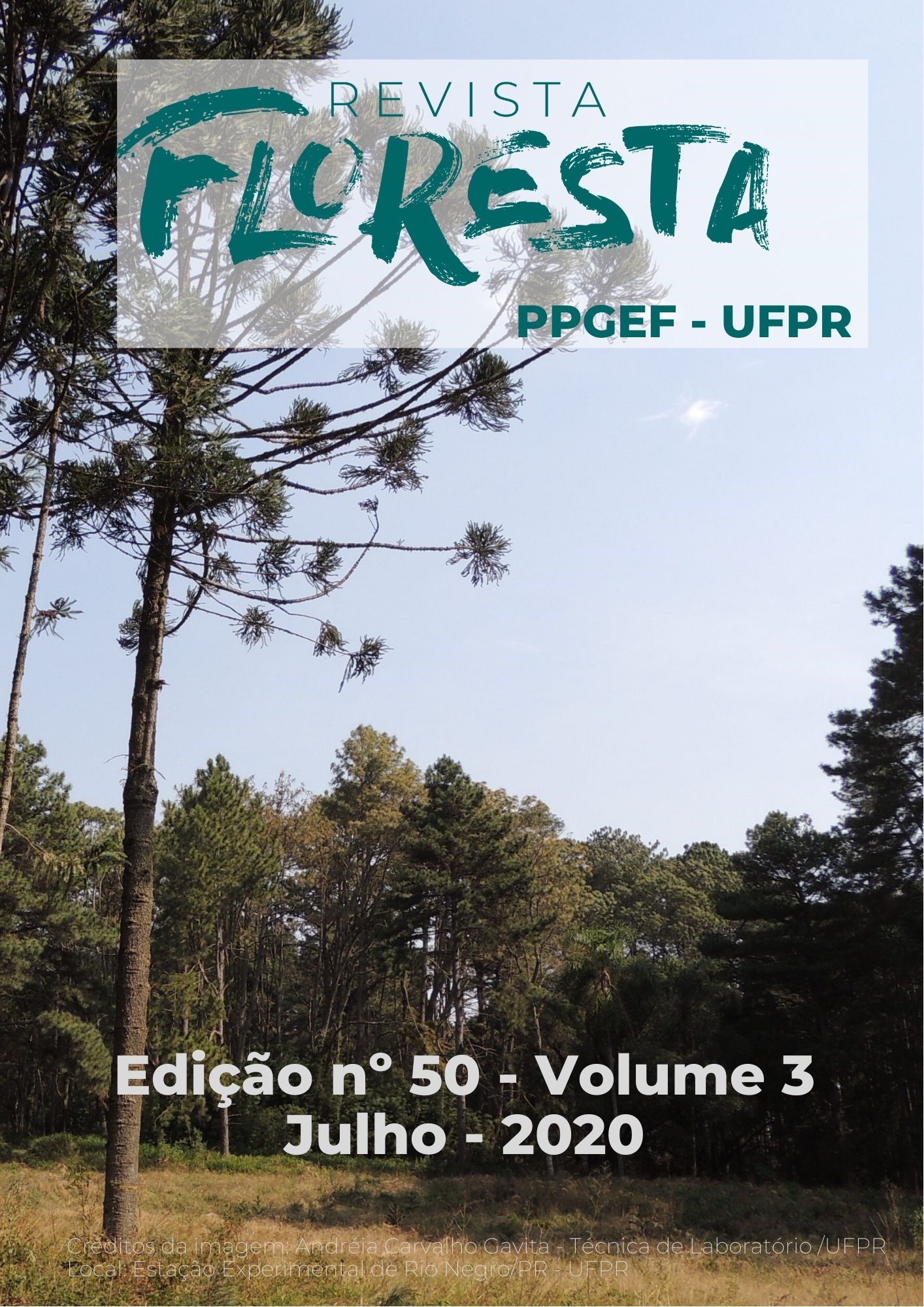COMPARISON OF DIFFERENT METHODS OF MEASURING TREE VOLUMES IN THE MUNICIPALITY OF ANAPU, PARÁ, BRAZIL
DOI:
https://doi.org/10.5380/rf.v50i3.61393Palavras-chave:
Cubic scaling, Diameter classes, Volumetric losses, Community forest management.Resumo
The objective of this study was to compare three methods of measuring the volume of individual trees used extensively as a basis for adjusting volumetric functions in areas under forest management in the Brazilian Amazon, and verify the influence of species and diameter classes in obtaining the volume of individual trees. A total of 53 sample trees belonging to five species were analyzed and separated into three diametric classes. The real volume (VR) was obtained using Smalian’s method on fixed sections of 2 meters intervals along the stem; the geometric volume (VG) was also obtained by Smalian’s method, but with the lengths of the various sections along the stem. Volume loss (VP) was subtracted from the VR to obtain the usable volume (VA). An ANOVA in a factorial design (5 x 3 x 3) was performed to verify the effect of 5 species, 3 diameter classes, and 3 volume measurement methods (VR, VG, and VA) on the different volumes obtained. The 3 factors did affect the outcome of the analysis, but there were no interactions found between these variables. The volumes obtained by cubic scaling with different lengths (VG) presented a lower mean volume than VR. Although there was no difference between the means of VA and VR, wood loss was 6.5% of the total volume. There is a relationship between section length and volume loss, according to the presence of hollows, twists and cracks in the logs in the largest diameter classes.
Downloads
Publicado
Como Citar
Edição
Seção
Licença
Direitos Autorais para artigos publicados nesta revista são do autor, com direitos de primeira publicação para a revista. Em virtude da aparecerem nesta revista de acesso público, os artigos são de uso gratuito, com atribuições próprias, em aplicações educacionais e não-comerciais.A revista, seguindo a recomendações do movimento Acesso Aberto, proporciona acesso publico a todo o seu conteudo, seguindo o principio de que tornar gratuito o acesso a pesquisas gera um maior intrcambio global de conhecimento.
Conteúdos do periódico licenciados sob uma CC BY-NC-SA 4.0



